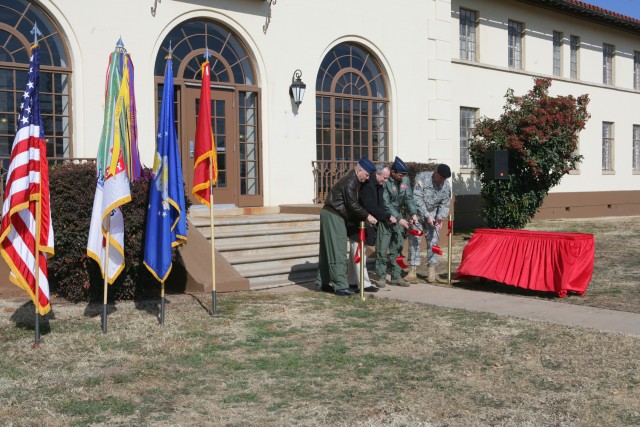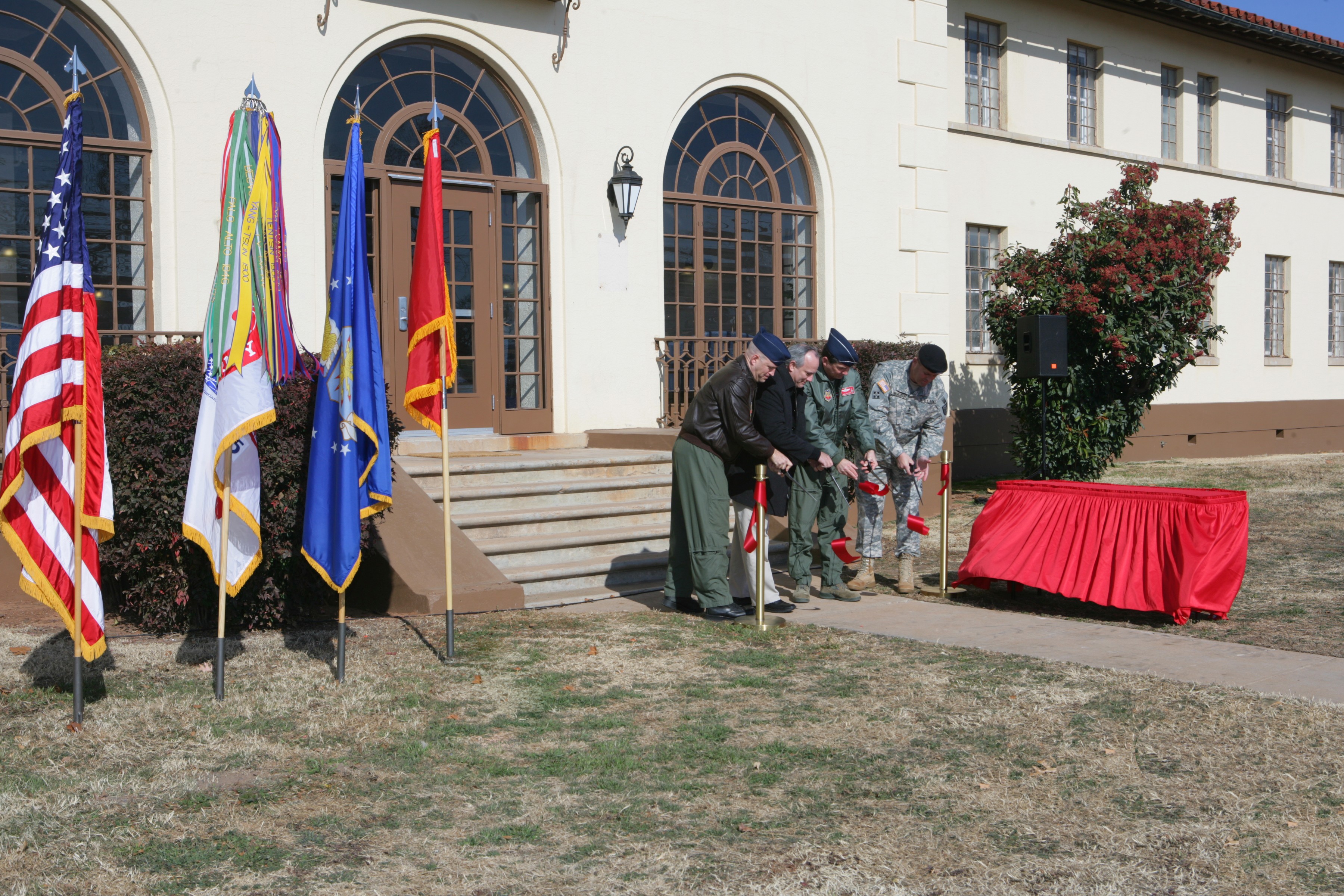
FORT SILL, Okla.-- A ribbon cutting ceremony Jan. 18 at Gunnell Hall marked the new home of the Air Force on Fort Sill furthering the joint aspect of the Fires Center of Excellence.
The building contains the Oklahoma Air National Guard and the Air Force detachment from which the 138th Combat Training Flight administers the Joint Fires Observer School.
Maj. Gen. David Halverson, FCoE and Fort Sill commanding general, spoke on the value this joint partner brings to the Fires center mission.
"This is about war fighting capability and all the people who were trained here and are now in Iraq and Afghanistan," said the general, in regards to the joint fires observers, the joint terminal attack controllers and joint integration teams who ensure the access to the joint fires needed to defeat the enemy.
Commanding the 138th CTF, Lt. Col. Rustan Schwichtenberg first arrived about four years ago when the staff consisted of about 24 people spread out in three or four buildings. Now, with all staff members in one building, he said continuity develops from having all his operations people together, with curriculum and training people down the hall, along with schedulers, planners and instructors nearby. This unifies the team and aids their mission execution.
But, the gist of everything is joint and that key word forms the basis for what the Air Force is doing here. His 65-member JFO staff certainly personifies this intent as 30 are retired military personnel with specialized skill sets, now contract instructors. The other 35 consist of Oklahoma ANG personnel, active duty, Guard and Reserve Air Force members, Marines and anyone else who is qualified as a subject matter expert who can augment and teach the course.
"Joint is right, and the key is standardization," he said. "The number of people don't matter just that they are together in a joint mind-set. The closer you get to a standardized product the more synchronized you will be. This in turn translates to an increased ability to execute objectives with less chance of having something go wrong."
Schwichtenberg said the Army has always been good about facilitating joint things that need to happen. Already he said the school is established and successful because of Army and Air Force support and because senior leadership in the Defense Department wanted this course to happen. This interest, support and funding has led to exponential growth as the school strives to meet the war fighter's needs.
Having flown five combat tours, Schwichtenberg well knows those needs and the JFO impact. His first tour in 2004 included what he called the chaos and extreme violence of the ground war near Fallujah, Iraq. He said U.S. forces were not as joint as they needed to be to be effective.
That began to change in late 2004 when the Army noted a shortage of joint terminal attack controllers. This contributed to the creation of the joint fires observers; the first of which graduated in 2006 and made their contributions on the battlefield. Returning to Iraq for another combat tour in 2008, he checked in daily with his Air Force JTAC, who handed the pilot off to an Army JFO.
"That JFO did a stellar job using me for whatever was needed, be it armed reconnaissance, route clearance or convoy support," said Schwichtenberg. By then, he was the officer in charge of the JFO course here with the experience in theater to see the school's effectiveness.
Multiplying that effectiveness, the school does more than just train up JFOs. Between classes, school instructors serve a secondary purpose teaching close air support familiarization to Basic Officer Leaders Course, Captain's Career Course and the Warrant Officer Basic Course students. He said just about every day Air Force personnel teach Soldiers how the Air Force does business to better integrate the team.
"The Army is very good about knowing what systems they have and how to employ them," said Schwichtenberg. "Generally, they don't understand the capabilities of the F-16 or B-1 bomber. But, through this instruction they gain the knowledge about joint procedures to effect Fires from a B-1 much as they would from an M777 howitzer."
The Air Force's presence on Fort Sill should remain stable for some time as Schwichtenberg said they have a 25-year permit to occupy Gunnell Hall. This testament to the long-term joint relationships developed in the Fires center, furthers the support the commander said he has received since his arrival. He said Halverson has always operated with a tone of inclusion encouraging everyone working together to figure out how to develop and refine these joint aspects.
"It's a learning process, we have to constantly fight for what's right, and joint is right. You will have better success; you will meet ground commanders' objectives; and you will win wars if you work together and learn what each other does on the battlefield," he said.

Social Sharing